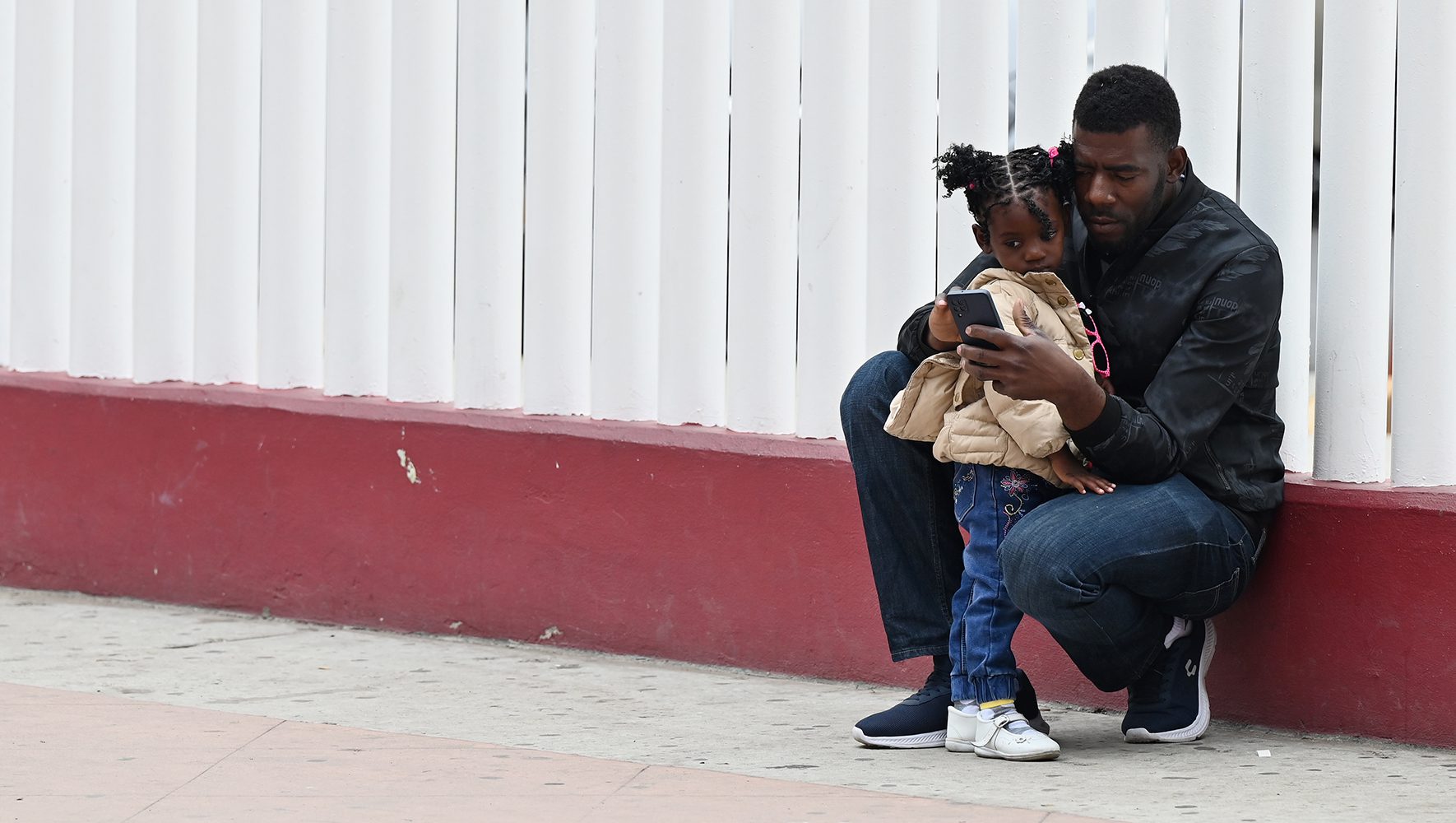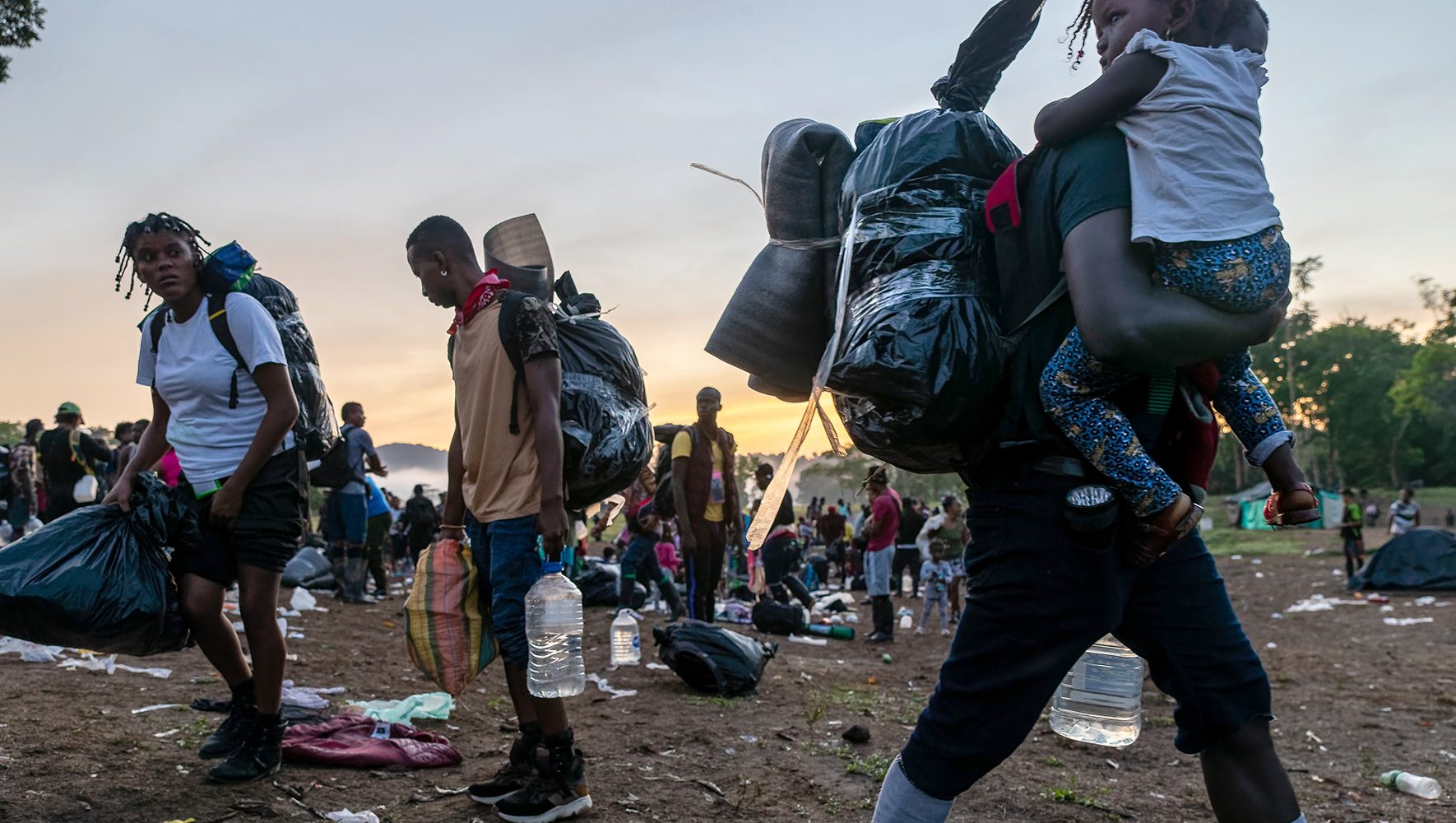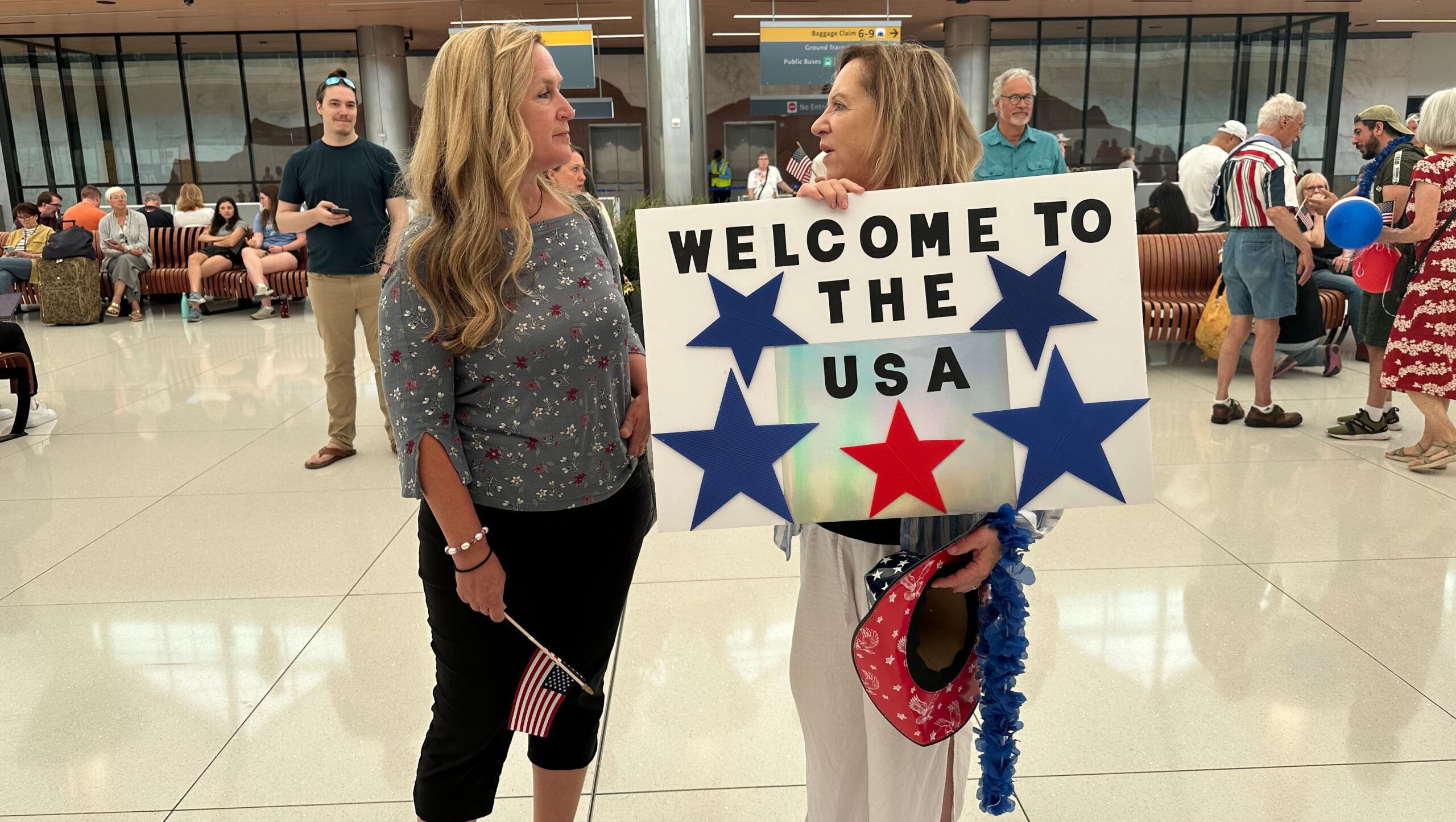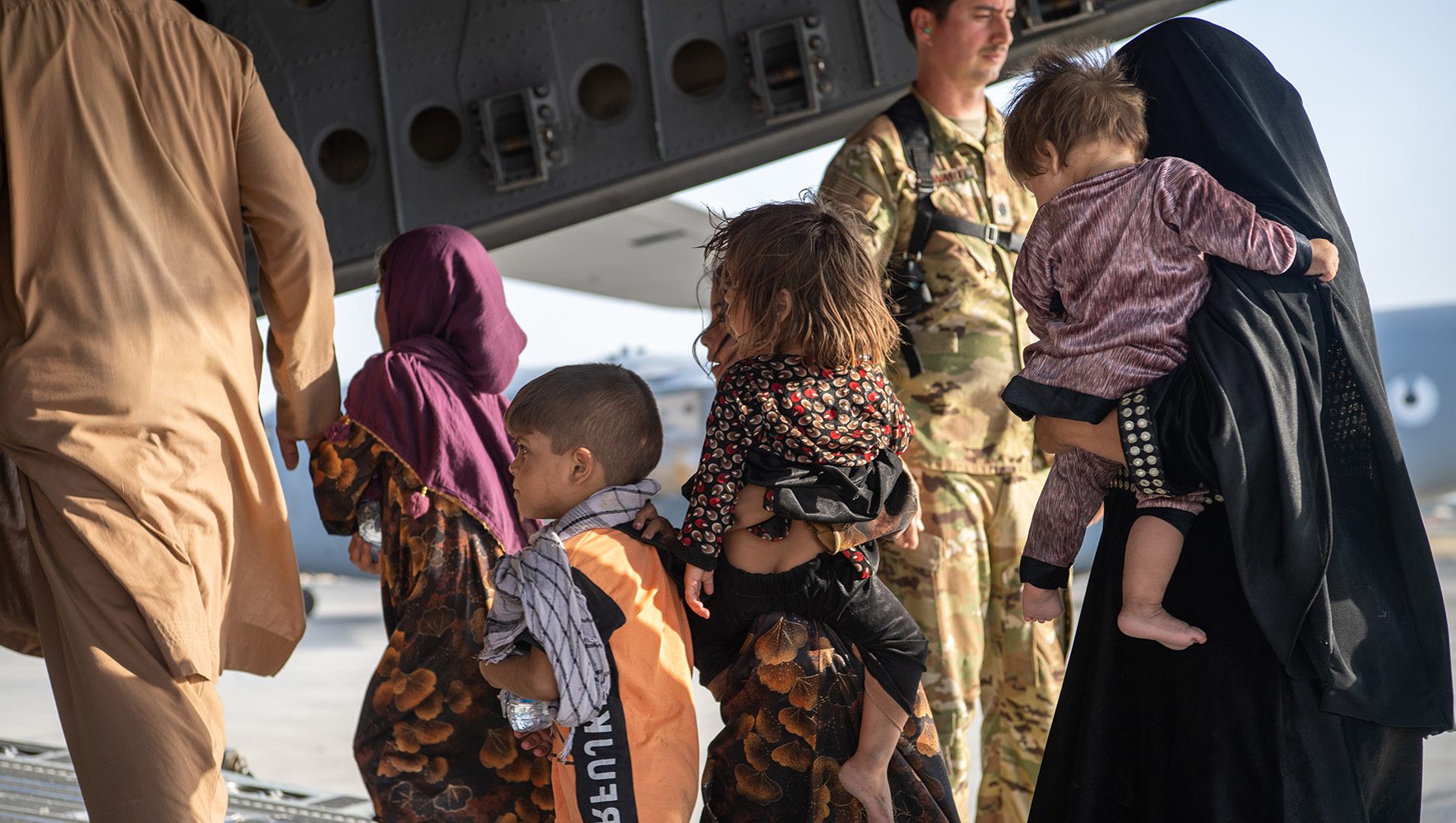U.S. Border Policies Harm People Fleeing Danger
By Ayelet Parness
HIAS.org
Jun 27, 2024

A Haitian father and daughter wait with family for their CBP One appointments at the El Chaparral border crossing at the U.S.-Mexico border in Tijuana, Mexico, on Thursday, June 6, 2024. (Carlos Moreno/NurPhoto/Getty Images)
Earlier this month, President Biden announced executive actions that would seal the U.S.-Mexico border if the number of asylum seekers reaches a daily average of 2,500 in a given week. HIAS, among other organizations, condemned this as a denial of asylum seekers’ rights to fair adjudication of their claims. The new policy worsens an already challenging situation for asylum seekers, a population that has already endured significant hardship under the asylum ban enacted in May 2023.
The experiences of one asylum seeker, M*, illustrate the vulnerability and uncertainty that asylum seekers endure under the asylum ban.
M routinely faced persecution in his home country of Guinea for his political beliefs and cultural identity. As a member of the Union of Democratic Forces of Guinea opposition party and the Fulani ethnic minority, M was arrested, tortured, and threatened with death multiple times under both the former and current government. After he escaped detention in 2023, Guinean security forces told M that he would be killed if he didn’t leave Guinea. He fled the country but was unable to bring his young children with him.
M first arrived in Nicaragua and began traveling north, with the intention of seeking asylum in the U.S.
“During the journey I encountered difficulties, many of which were connected to the color of my skin,” he said. “When I first got to Mexico, I asked people for help, but no one would speak to me. I believe it was because I am a Black man, and people did not want to help Black people. “
On multiple occasions, this escalated to overt discrimination and violence. Mexican police or cartel members would regularly remove M and other Black riders from buses, forcing them to walk many miles to their next destination. At one point, M and other Black people traveling north through Mexico were held at gunpoint for nearly six hours by cartel members who robbed them of nearly all their belongings.
After crossing into the U.S., M found his way to New York where he became a HIAS client. His experience would, under ordinary circumstances, provide a strong claim for an asylum case. But since the asylum ban was passed last year, M, like many others, remains in limbo.
“It is a complex process,” said M. “If I didn’t have an attorney, I would not feel at ease. I would feel isolated and frustrated, like I could not do anything.”
“When I first got to Mexico, I asked people for help, but no one would speak to me. I believe it was because I am a Black man, and people did not want to help Black people. “
M, a HIAS client and asylum seeker from Guinea
A Year Under the Asylum Ban
Under U.S. and international law, people are allowed to ask for asylum — a protection granted to those fleeing persecution based on their race, religion, nationality, political opinion, or membership in a particular social group — when they are on U.S. soil, regardless of how they entered the country. In recent years, amid a xenophobic political climate, the U.S. government has enacted a number of measures to prevent or limit people seeking asylum at the U.S.-Mexico border.
Under the asylum ban, formally called the Circumvention of Lawful Pathways rule, people can only apply for asylum at the U.S.-Mexico border if they present themselves at an official border crossing after making an appointment using DHS’s mobile application, CBP One. To be exempt from this requirement, they must be able to prove that they have sought and been denied asylum in a country through which they traveled on their way to the U.S.
In effect, the asylum ban presents a form of digital metering — the practice of limiting asylum seekers processed at official border crossings to a certain number per day — that forces people who are fleeing extreme danger to wait months for an appointment, often as they are targeted for further violence based on their migration status. Human Rights First has reported over 2,500 kidnappings and other violent attacks on asylum seekers and migrants in Mexico, including people waiting to receive CBP One appointments, since the ban was enacted. Currently, the wait for a CBP One appointment averages two to four months — but can take as long as seven.
Related News
Beyond the Border: The Regional Effects of the U.S. Asylum Ban

M, like many other asylum seekers, was not even aware that the asylum ban or CBP One application existed when he crossed into the U.S. Even if he had known about CBP One — an app that presents many challenges to asylum seekers — he couldn’t read it: the app is not available in his native French. And even if he had been fully informed about the law and could access the app in his native language, waiting for an appointment would have prolonged his exposure to the violence and discrimination that he already faced while traveling through Mexico.
“When asylum seekers are fleeing for their lives, waiting is not a safe option,” said Nathan Gargan, a HIAS senior staff attorney representing M. “If M is not able to prove to an immigration judge that his circumstances warranted an exception to the asylum ban, he could be returned to a country where he was repeatedly tortured and threatened with death for his political beliefs.”
Political Pawns in a Contentious Election Cycle
Amidst a fraught election cycle, asylum seekers have increasingly become the target of both negative political rhetoric and further legislation from leaders across the political spectrum aimed at curtailing their right to seek safety in the U.S. Since February 2023, 165 members of Congress have used dehumanizing rhetoric that likens asylum seekers and migrants to a military “invasion,” including in 12 pieces of legislation introduced before congress. These dangerous and untrue narratives about a “crisis” or “invasion” at the border fuel policies that harm asylum seekers without making the U.S. any safer, say advocates at HIAS and peer organizations.
“The executive action enacted earlier this month is part of a larger trend of politicians hurting asylum seekers for political gain,” said Vanessa Dojaquez-Torres, HIAS’ policy counsel. “It will not fix our nation’s broken immigration system or improve security at the U.S.-Mexico border. Instead, it treats families and individuals fleeing danger and persecution as political pawns in an attempt to appeal to voters.”
Turning people away if the number of arrivals at the U.S.-Mexico border hits an average threshold is arbitrary and contrary to asylum law. Asylum seekers are unlikely to know whether they will be subject to this rule before they cross and could face additional consequences, including a five-year bar on reentry into the U.S. and criminal prosecution.
While the administration has reported a decrease in border crossings over the three weeks since the executive action was announced, outcomes of past deterrence policies have repeatedly demonstrated that in the long run they do not prevent people from trying to find safety in the U.S. Under Title 42, which shut down asylum at the U.S.-Mexico border almost entirely from March 2020 to May 2023, the number of people who crossed the border between official border crossings increased overall, and more people attempted to cross multiple times. When people fleeing for their lives are denied safe pathways to save themselves and their families from danger, they are forced to take much more perilous routes into the U.S. — often to the great benefit of smugglers and traffickers.
"The executive action treats families and individuals fleeing danger and persecution as political pawns in an attempt to appeal to voters.”
Vanessa Dojaquez-Torres, HIAS policy counsel
Take Action
For over a century, HIAS has spoken out on behalf of the people who are most at risk — people like M, who are fleeing violence and danger because of who they are and what they believe. We will not stop now. We insist that our elected leaders pursue compassionate and fair solutions to the challenges of our time. HIAS is asking the Biden administration to withdraw this executive order. Join HIAS in letting President Biden know that we will not be silent as he closes the border to people fleeing danger.
*Pseudonym used for client’s protection.





